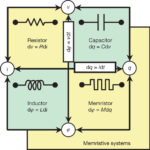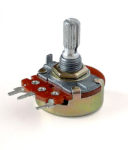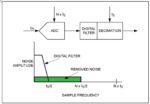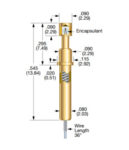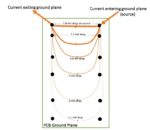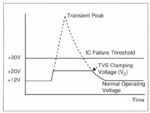Professor Leon Chua of the Electrical Engineering Department of UC Berkeley coined the term memristor while working on mathematical models in electrical engineering. He noted that resistors relate voltage to current (R=V/I), capacitors relate charge to voltage (C = Q/V), and inductors relate magnetic flux to current (L= Φ/I). What seemed to be missing was a […]
Digital potentiometer or digipot: applications and uses
A digital potentiometer (or “digipot”) operates like a traditional mechanical potentiometer (pot), which is a variable resistor, except the digipot is an integrated chip (IC) that accepts signal input rather than the physical movement of a shaft or slide for adjustment. Essentially, both types of potentiometer are analog devices that provide variable resistance. However, a […]
ADC resolution, accuracy, repeatability, and throughput
Here, we review some common specifications for successive approximation register (SAR) and sigma delta analog to digital converters (ADCs.) For converters, resolution is the number of bits per conversion cycle that the converter is capable of processing. For example, a converter with 12 bits of resolution is often referred to as “12 bits wide,” since […]
RTD vs. thermocouple vs. thermistor in temperature sensors
Temperature doesn’t change very quickly, and temperature sensors match that characteristic. Environmental temperature changes are generally slow, on the order of less than 0.1 sec/°C. Typical temperature sensors used in circuits are resistance temperature devices (RTDs), thermocouples, thermistors or integrated silicon sensors. Trade-offs amongst these devices include cost, cost to operate, response time, noise immunity, […]
What is common-impedance coupling?
Common-impedance coupling occurs when two or more circuits share a common ground and is the result of a shared impedance in a shared ground path. The best way to explain it is by way of a common example, such as when the lights dim when an air conditioner is turned on; they probably share the […]
Transient Voltage Suppressor Diode: What is it?
Transients are sudden high-frequency overvoltages that can destroy a chip. A silicon Transient Voltage Suppressor (TVS) is a circuit protection component that either attenuates (reduces) or filters a transient voltage spike (overvoltage), thus protecting your circuit. Another type of TVS diverts a voltage spike away from your circuit (also known as shunting, clamping, or bypassing.) […]
Supercapacitor or ultracapacitor basics: What you need to know
A supercapacitor, also known as an ultracapacitor, is a high-capacity capacitor that possesses a lower energy density than batteries, but higher than conventional capacitors. In the race for longer smartphone life, batteries have not made as much progress in the capacity as semiconductors have made in power efficiency. However, semiconductors are fast approaching a point […]
Trade-offs in reducing noise with linear power supplies vs. switch mode power supplies
Some analog applications are very noise sensitive such as medical equipment, communications equipment, instrumentation, or test and measurement equipment. Elimination of all potential noise sources in a circuit may be necessary, including conducted, radiated, and thermal noise. One possible source of conducted noise can be found in the power supply bus. Eliminating this noise […]
Should I use an op amp as a comparator?
Perhaps you have a quad pack of op amps, are using only three, and need a single comparator. It might be tempting to use the remaining op amp as a comparator, after all, both have high gain, low offset, and high common-mode rejection. But it’s easier said than done, because a comparator and an op […]
Why do industrial sensors measure in 4-20mA to programmable logic controllers?
A large number of sensors that take in and translate data from the real world into electrical signals are analog sensors, and if listed as digital sensors, it’s because they have integrated analog-to-digital converters. Traditionally, wired sensors have altered an electrical current in response to environmental conditions. Sensors range from familiar examples like photodiodes and […]

